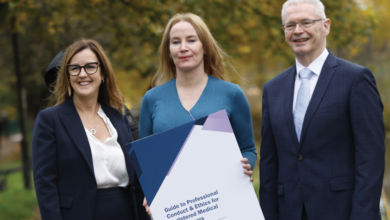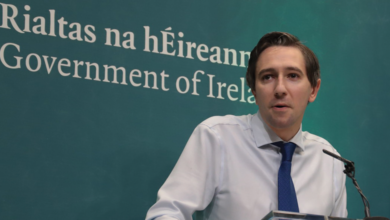St James’s Hospital: leading global innovation in healthcare
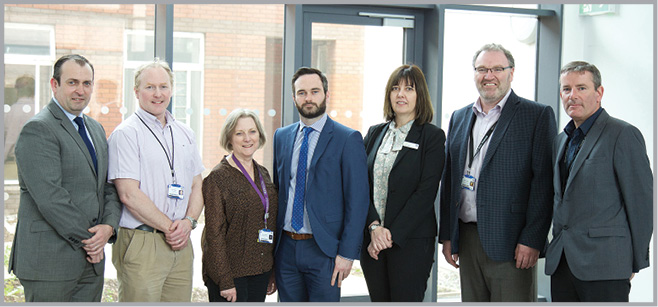

A hospital wide approach to adopting GS1 standards
St James’s Hospital, Dublin, continues to lead the way following the establishment of the ‘Scan for Surgery’ programme and the introduction of the automatic tracking of precious tissue samples. Both projects make use of standards-based technology to deliver improved patient safety and efficiency. These programmes follow on from other globally recognised exemplar projects carried out at the Dublin hospital.
Proven traceability based on standards
St James’s Hospital has a proven record in the implementation of track and trace technology to support patient safety in areas such as haemophilia treatment and in sterilisation services for surgical instruments and endoscopes – both national programmes. These solutions have proven that the use of international standards significantly enhances patient safety, traceability and certainty of product identification for effective and efficient product recall across the healthcare pathway.
In more recent years St James’s has used modern barcode technology to automate the procurement of medical supplies. The award-winning e-Procurement project went live in 2014 enabling the electronic communication of four ‘Purchase to Pay’ messages between the hospital and its suppliers. The messages use the GS1 GTIN (Global Trade Item Number) and GLN (Global Location Number) as the common product and location identifier, enabling the seamless sharing of messages and replacing paper-based systems.
Building a digital hospital on GS1 standards
In 2015, the hospital introduced the automatic tracking of laboratory samples from theatre to the laboratory using RFID (Radio Frequency Identification). All samples are tagged in theatre and both the sample and porter are automatically tracked through the hospital to the laboratory. If the sample doesn’t arrive within a specified time, an alert is sent and if necessary, timely and corrective action is taken.
Prior to this, the tracking of samples was completely paper-based and prone to error with no visibility or assurances that the samples were delivered on time. This represented a significant risk to the hospital, which has now been addressed through this initiative.
This is a worldwide first, proving the use of passive RFID for the automatic tracking of precious samples. The project has since been expanded to track valuable art received by the hospital through donations, to prove the application for asset tracking within the hospital. The patient safety benefits realised from this project are now also being applied for the automatic tracking of vulnerable patients within the hospital. Further applications are currently being planned to scale the appropriate use of automatic tracking across the hospital. The recent installation of two robotic dispensing systems in pharmacy is further testament to the hospitals innovative approach.
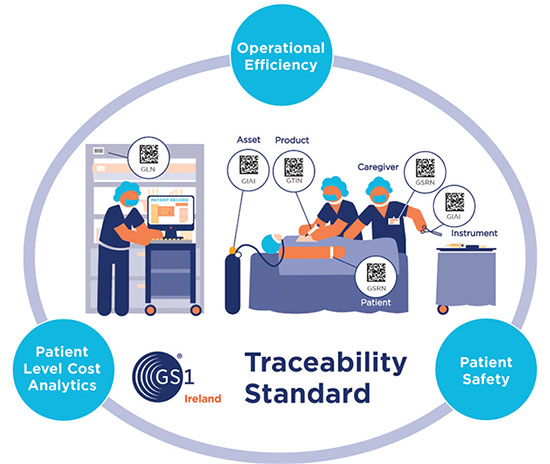
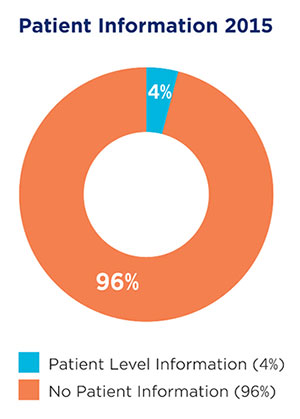
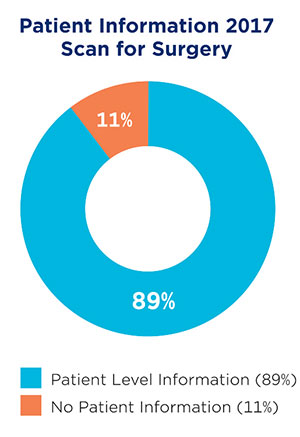
Scan for Surgery: a new era for patient level data
St James’s Hospital established a ‘Scan for Surgery’ steering group in 2016 to work on achieving better visibility of activity at the point-of-care, for both patient safety and efficiency improvements. The hospital specifically looked at scanning in theatre and the results being achieved are remarkable.
The aim was to introduce technology to scan products to patients which would:
• improve patient safety through traceability;
• improve procedure cost analytics; and
• automate re-ordering to free up time for clinical staff who have traditionally been involved in a manual procurement process and improve inventory management.
St James’s Hospital can now track over 89 per cent of cost direct to the patient in theatre and estimates a significant reduction in the time to order products.
“Until now we had very little visibility on patient costs behind the red line in theatre. In most cases, there was no electronic record of which products were used on which patients. That has all changed now. Combining the data from ‘Scan for Surgery’ with existing Business Intelligence tools we can now see very detailed cost analytics at a procedure level and we can easily trace products to patients in the event of a recall,” says John Cotter, Programme Director ABF (activity based funding).
A significant level of stakeholder engagement was undertaken across various disciplines to ensure scanning at the point of care was adopted by users. The project started with using the GS1 Scanning App to link the barcode on the packaging to the SAP master data, proving that nearly 80 per cent of the medical devices in use in theatre have a GS1 barcode.
‘Scan for Surgery’ was introduced in two theatres initially and the GHX PowerGate point-of-care scanning system was used by the nursing staff to scan all products used during each procedure. Adoption was aided by the fact that the nurses were already scanning instrument trays and blood products and they were automatically tracking lab samples in theatre using RFID. The nursing staff were behind this project from the start and the team worked collaboratively to achieve the fantastic results. Over the next few months it is planned to introduce ‘Scan for Surgery’ in all theatres and critical care areas of the hospital.
Simon Moores, Director of Finance, explains: “This is the most exciting hospital project to date; it is transformational in nature. The opportunity to have visibility of what is happening at the point-of-care means we can make better decisions, which ultimately benefits the patient.”
Better data, better decisions
Pharmaceutical and medical device suppliers are being required by regulation to barcode products from 2019 and 2020 respectively, which will support traceability to the patient level. The importance of GS1 adoption is recognised at a national level by the HSE who are requesting GS1 information on national tenders.
“This holistic approach for a hospital-wide implementation of GS1 standards with a view to increasing patient safety and operational efficiency, is a key strategic objective for St James’s Hospital. The imminent legislation for suppliers provides significant opportunity for wide scale change and benefits for Irish Healthcare,” says Vincent Callan, Director of Facilities Management.
St James’s Hospital is the first Irish hospital to achieve this level of patient data capture at the point-of-care which supports patient level costing. The hospital has an ambitious timeline for the rest of 2017 and 2018 to roll out a variety of GS1-based projects. The benefits in terms of clinical and administrative time saved are proven. This new way of working is giving the hospital hugely valuable data. The hospital is using this data along with Business Intelligence software to deliver real benefits for decision-making in relation to costs and procurement and to underpin the hospitals commitment to patient safety.
For more information, please contact:
Vincent Callan, St James’s Hospital
E: vcallan@stjames.ie
John Cotter, St James’s Hospital
E: jcotter@stjames.ie
W: www.stjames.ie



